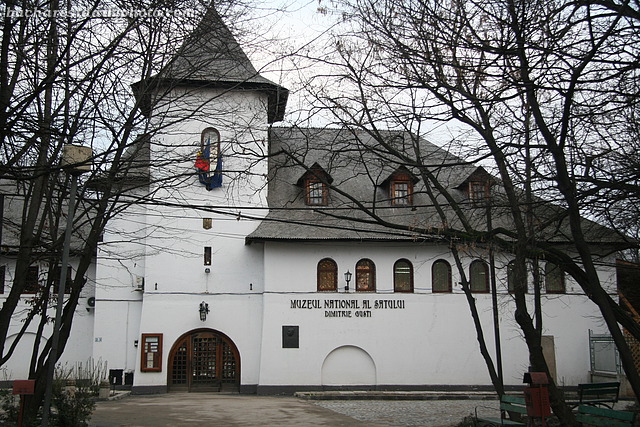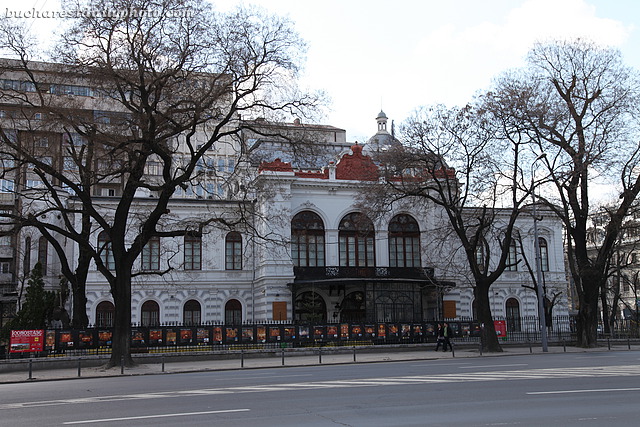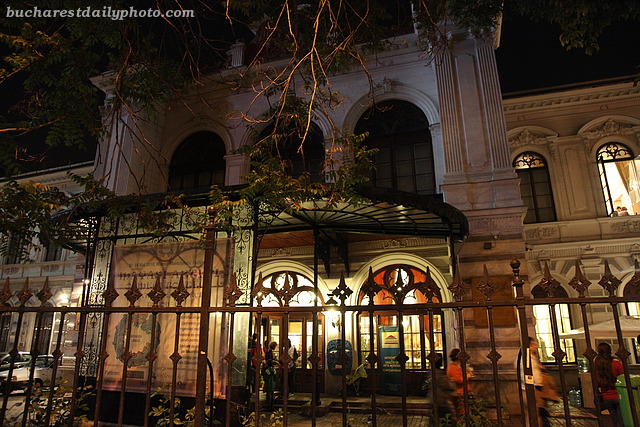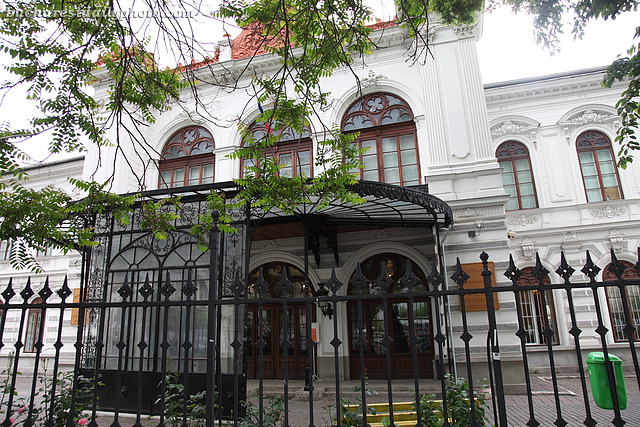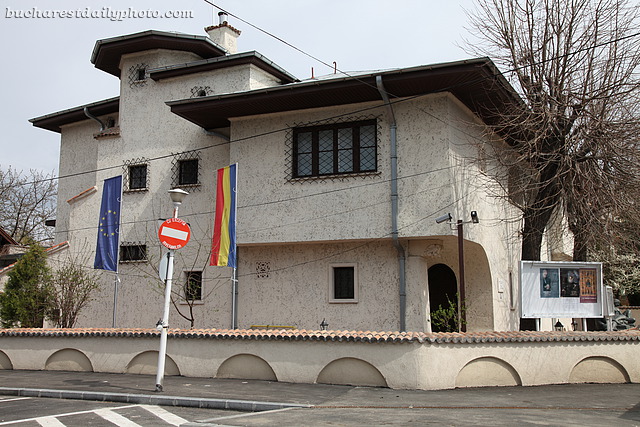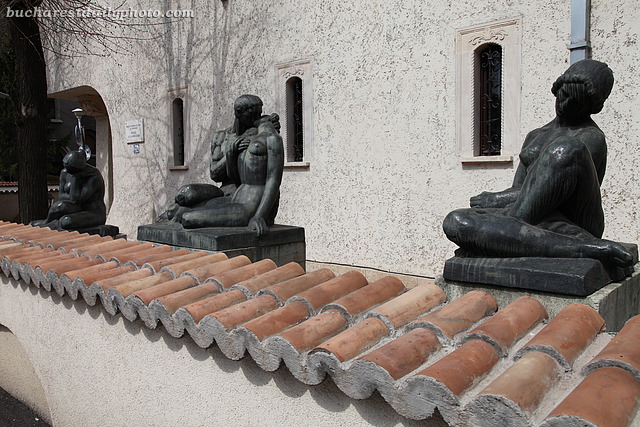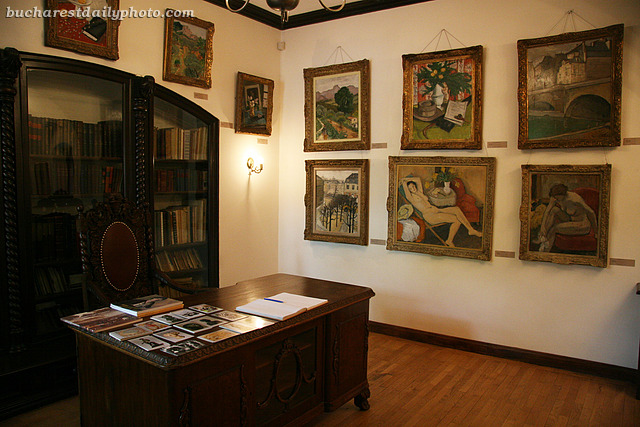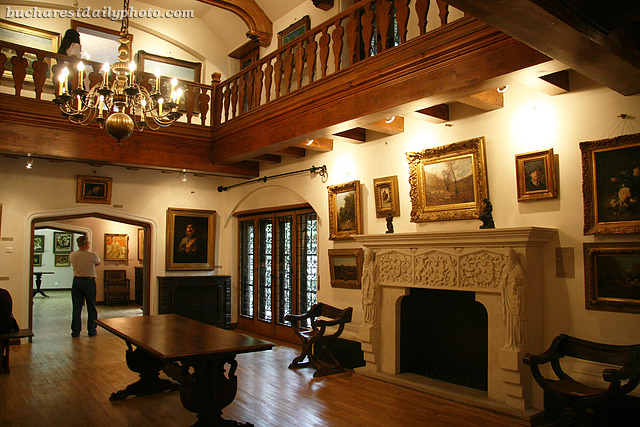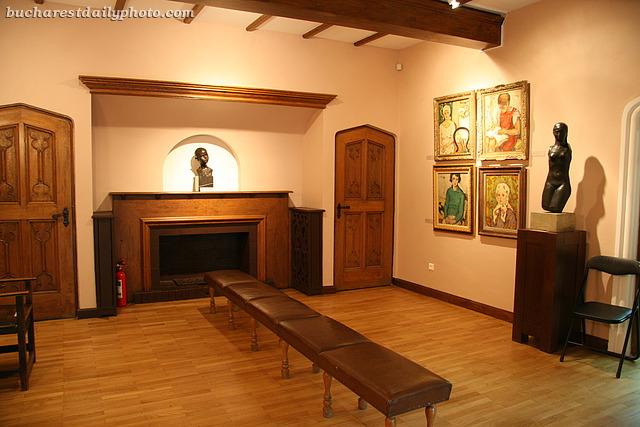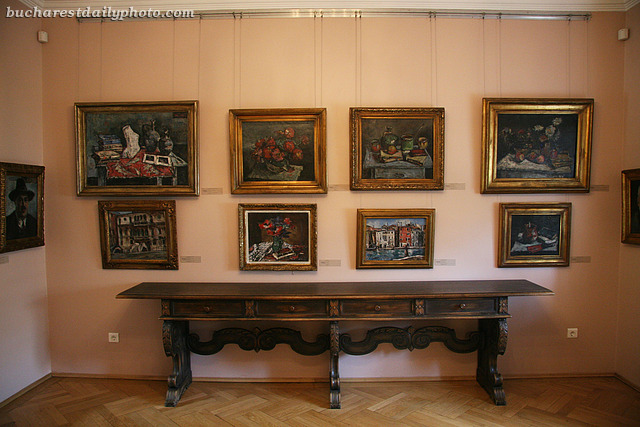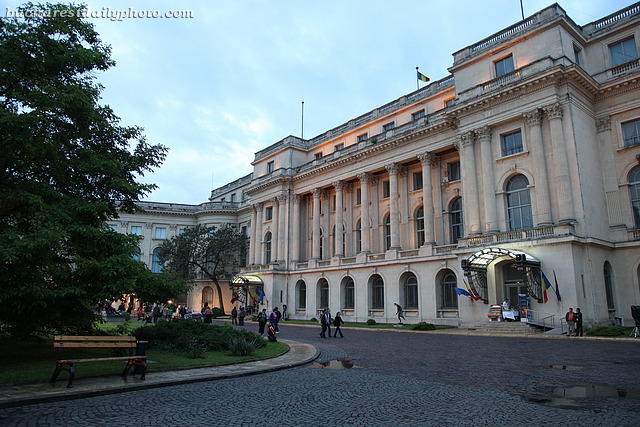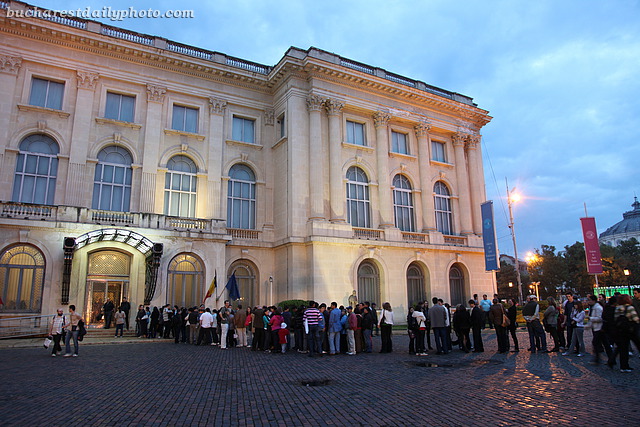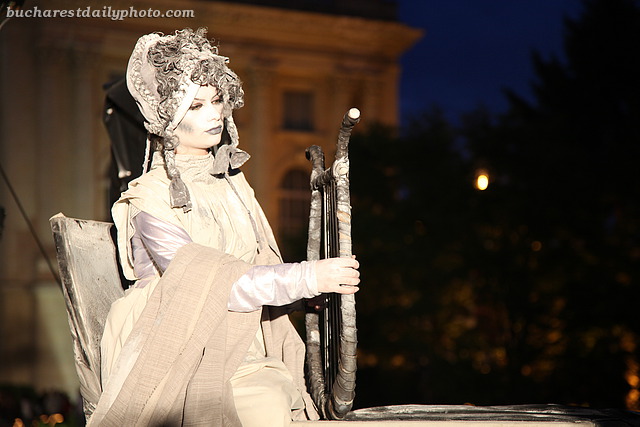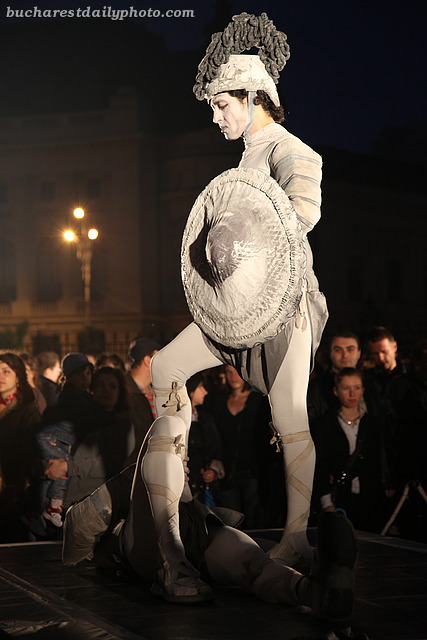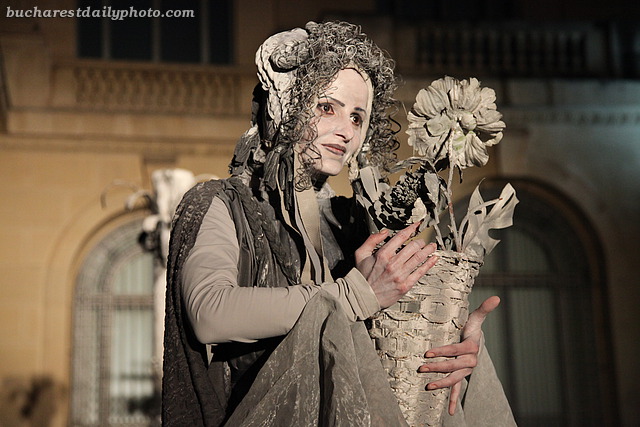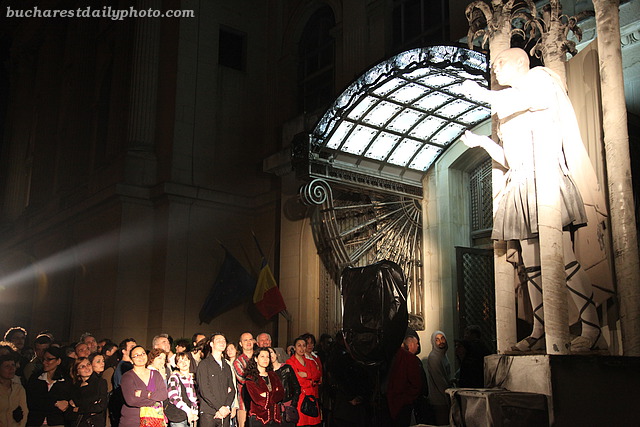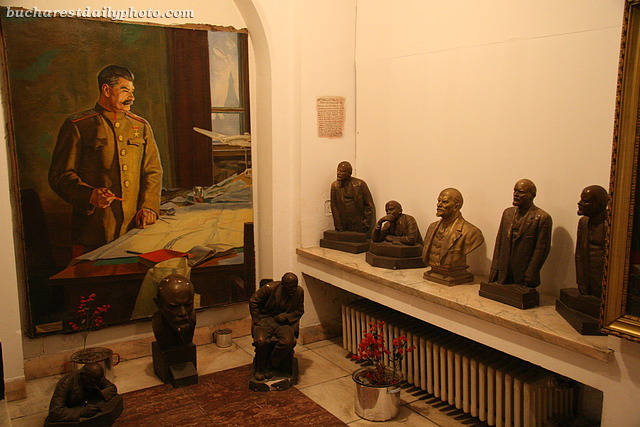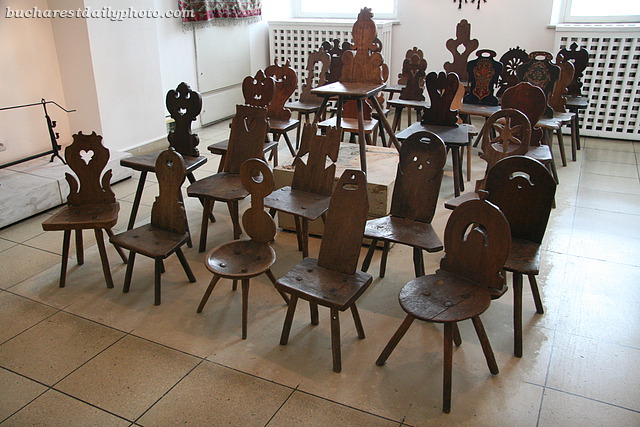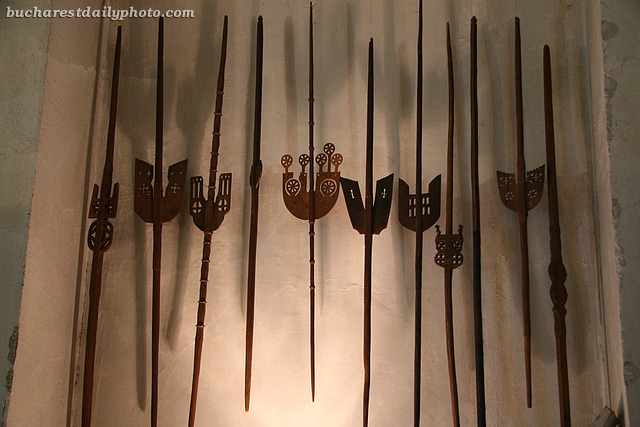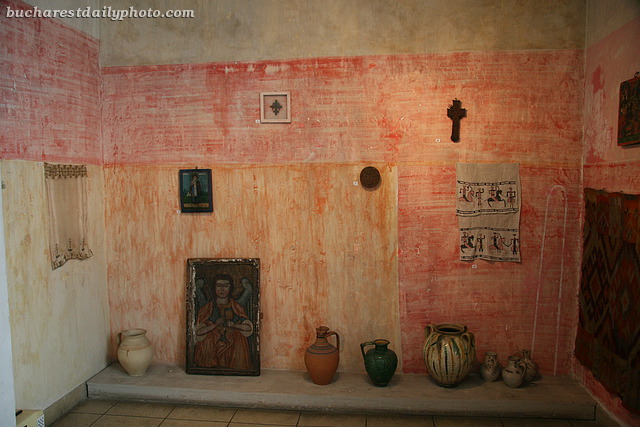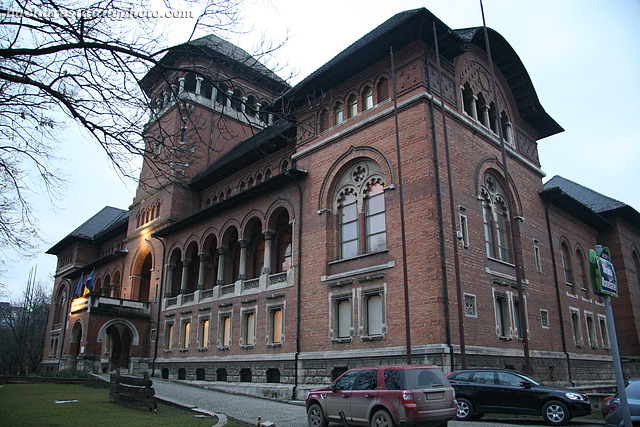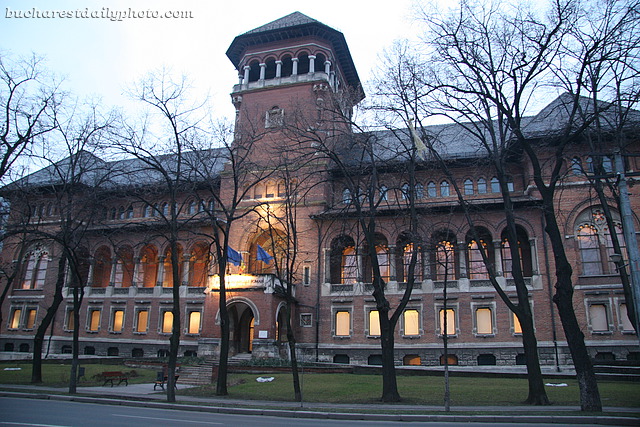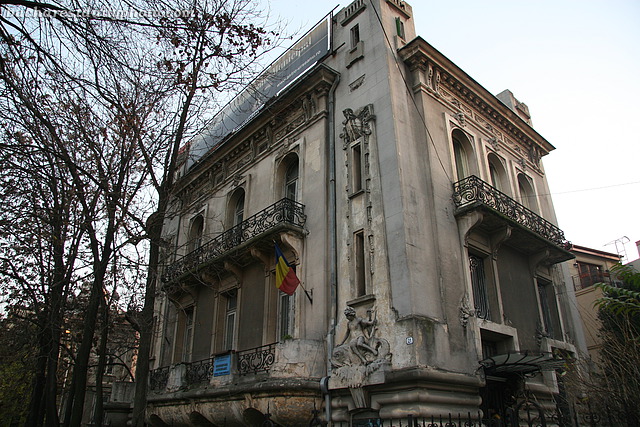Two years ago I posted in detail about the Village Museum (here and here), one of the most popular tourist attractions of Bucharest. Today, I give you a shot featuring the entrance to the museum.
This is another shot of the Museum of the City of Bucharest, this time showing the whole building. I took the photo back at the beginning of April when the trees were still bare.
These two shots show the mansion that houses the Museum of the City of Bucharest which is located in the University Square. The building is also known as Suţu Palace after the name of its builder, Costache Suţu. It was raised in 1833-1835 following the plans of Viennese architects Conrad Schwink and Johann Veit. The style of the building is considered to be neo-gothic. The palace was inherited by Costache Suţu’s son, Grigore Suţu, which together with his wife Irina, hosted many balls, receptions and dances at the palace, attracting Bucharest’s high society. After their death the palace was passed on, hosting first the headquarters of the Chrissoveloni Bank and later the offices of Romania’s National Savings Bank. In 1959 it became the Museum of History of the City of Bucharest.
Krikor Zambaccian (1889 – 1962) was a wealthy Armenian businessman and a lover of fine arts, who over the course of his life assembled a great art collection. În 1930 he asked architect C.D. Galin to design a house that will be used as living quarters as well as a museum for the art collection. In 1942 when the house was ready, Zambaccian opened his collection for public view once a week. The Zambaccian Museum was inaugurated in 1947 when Zambaccian donated his collection and the house to the Romanian state. The donation papers included the condition that the collection will remain in the house but in 1977 after the big earthquake the communist state moved the collection to the Art Collections Museum, citing imaginary concerns about the building’s structure. În 1992, after the fall of communism, the collection was returned to the house and the museum reopened. Most of the works are by Romanian artists (Nicolae Grigorescu, Ioan Andreescu, Ştefan Luchian, Jean Al. Steriadi, Gheorghe Petraşcu, Nicolae Tonitza, Nicolae Dărăscu, Theodor Pallady, Iosif Iser, Corneliu Baba, to name a few) starting with mid-19th century to the mid-20th century. There are also a few paintings by French artists like Delacroix, Renoir, Pissarro, Sisley, Cézanne etc. When I visited there were only 5 or 6 more visitors, so it feels like having the place to yourself. I can only imagine how it was to be living there.
For those unfamiliar with it, The Night of Museums is a cultural event organized together by multiple museums when all the participant institutions remain open late into the night and admittance is free. The idea behind the project is to introduce new people to cultural institutions. Articles I found on the web noted that on this year’s edition over 3000 museums in 39 countries remained open late Saturday night, May 15th. 12 museums took part in this year’s edition (the 6th) in Bucharest. As you can see from the photos, there were lines at the entrance, something that you never see otherwise. On the contrary, if you visit on a normal day you practically have the place to yourself. Most of the museums also had performance events, like plays, movies or music concerts. Today’s photos are from the National Art Museum, which presented a pantomime show called “The Statues” performed by Masca theatre company.
In the cellar of the Museum of Romanian Peasant there are two small rooms dedicated to the “collectivization” of agriculture in Romania which took place in the early years of the communist regime. Started in 1949 the project sought to force the peasants to bring their land into collective farms. Aside from the persistent propaganda, violent means like intimidation, beating, arrest and imprisonment were used to convince peasants to join. According to the wikipedia article, by 1962 a total of 96% of the country’s arable surface and 93.4% of its agricultural land had been included in collective structures. To achieve this 80.000 peasants were taken to court, 30.000 of which were judged and found guilty in public trials. The effect of the small rooms is rather chilling. The first room is wallpapered with old newspapers clippings while the second room looks like one used for a party meeting, where “traitors” were brought forward, accused and asked to self-criticize. In the photo you can see the entrance to the first room where one corner is occupied with a collection of busts from that era.
Today is Theme Day at the City Daily Photo community, a monthly event that happens the first day of every month, when all participating blogs will post a picture that relates to the theme day’s description. Today’s theme is: Wood. Click here to view thumbnails for all participants
If you feel tired after walking through the Museum of Romanian Peasant for an hour, you might feel inclined to sit down on the chairs shown in the photograph above. This wouldn’t be advisable, as you might end up being chased around by the army of attendants, who as you can see from the photograph below, have all different kinds of weapons at their disposal 🙂
What makes this museum special is the way the collection is displayed, less like a museum and more like an art gallery. Objects are not behind glass cases but displayed freely and the display information is hand written on pieces of paper or illustrated by sketches. This somehow cuts the distance between the viewer and the objects, making the impact of the displays greater, more personal. It’s certainly different than other museums I’ve been to. The vision belongs to the museum’s first director after 1990, painter Horia Bernea, and to one of his main collaborators Irina Nicolau. Under their guidance the Museum of Romanian Peasant won the the European Museum of the Year Award in 1996, the first museum in Eastern Europe to be granted this honor.
The Museum of Romanian Peasant is one of my favourite museums in Bucharest. It houses, as the name suggests, a large collection of objects used by Romanian peasants: pottery, textiles, traditional costumes, icons and other religious artifacts, pieces of furniture, carpets etc as well as photographs documenting the customs of rural life. Today’s photographs show the red-brick facade of the building. The museum was founded in 1906 under the name of Ethnographic and National Art Museum and was housed temporarily at another location. Construction to the present building started in 1912, was stopped in 1916 and restarted in 1932. It was completed in 1941, 29 years after it was started. The building is the project of architect Nicolae Ghika Budeşti who designed it as an illustration of the neo-Romanian style, very popular in Bucharest at the beginning of the 20th century. In 1953, the communists “liberated” the building, turning it into a museum dedicated to the history of the Communist Party and sending the collection away. In 1990, after the Romanian Revolution, the collection returned home.
The statues from four days ago belong to the building shown in today’s photo: the Astronomical Observatory of Bucharest, a beautiful house located on Lascăr Catargiu boulevard. It was built during the years 1908-1910 by architect I. D. Berindei for Admiral Vasile Urseanu (1848-1926). The Admiral’s passion was astronomy and he was the president of the first astronomical society of Bucharest, established in 1908. The house, built from the admiral’s personal funds and used by the society, has an astronomical cupola in its highest point (not visible in the photo) and was endowed by Urseanu with a telescope. After the death of the admiral the house passed to his wife who in 1933 donated it to the state to be used as the city’s first Art Galley (Pinacoteca). The Astronomical Observatory and Bucharest’s Art Gallery coexisted in the building until 1949 when the paintings were moved to the National Gallery and the Museum of City of Bucharest. The observatory is open for public.
